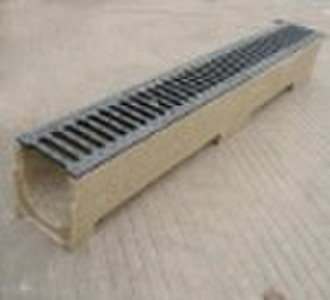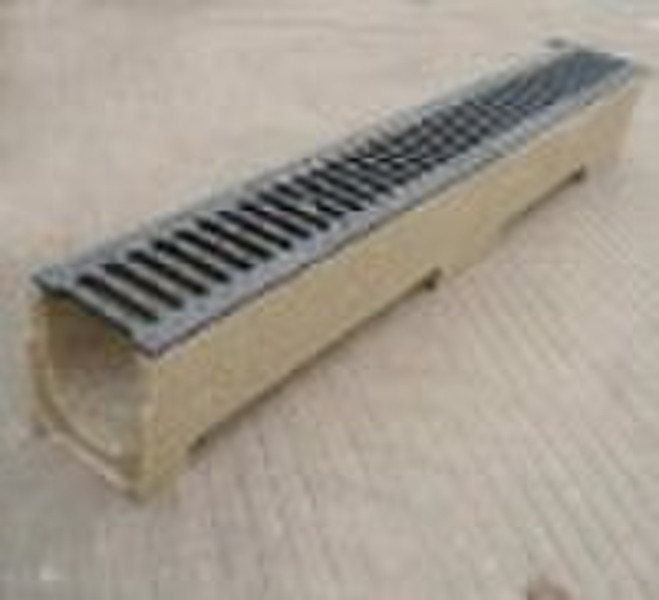OEM precast concrete products Polymer Concrete Dra
原价: 1,00 USD
南京乡, 中国
生产能力:
3000 计 / 月

Rod Tang
联系人姓名
基本信息
| 出生地 | Jiangsu China (Mainland) |
|---|---|
| 牌子的名字 | polycon |
| 模式的数量 | A15---F900 |
OEM Polymer Concrete Drainage Channel water channelLinear drainage refers to systems that drain along their entire length,rather than at one particularpoint, as a gully does. Most are variationson the theme of an enclosed channel, typically with a u-shapedcross-section and some form of grating over the top.They come in a range of sizes, from 50mm deep units for roof drainage to 250mm deep motorway drains, and in a ever widening range of materials, including polymer concrete, wet-press concrete, HDPE, and stainless steel. The end use of the drain will determine which type is most suitable to a specific application. There are 6 'grades' available which comply to the European Standard DIN 19580 (there is no equivalent BS) and these are shown in the table above. Note that the overall class rating of a linear drain is dependent on both channel and grating meeting the above test loads There are two basic types - those with built-in falls and those that maintain a regular depth along their entire length, and so must be laid to a fall. The units with the built-in falls tend to be used to drain large, flat areas, such as car parks, freight yards, airports etc, and the 'regular depth' type are used for short lengths of drain, and on areas with a natual slope or fall. Linear drains are sectional and therefore there is a joint between adjacent units. Many types incorporate some form of overlap joint, so that lengths of drain have a distinct 'male' and female' end, usually a tongue and groove arrangement. These joints can be left 'dry' in most small-scale applications, as they will seal with silt and debris over time, but they should be sealed with a suitable silicon or polysulphide sealant where water-tightness is an issue. Obviously, the linear drain has to discharge somewhere, and this section looks at a few of the more common methods used to connect the linear drain with the surface water sewer system
交货条款及包装
Packaging Detail: wood or plastic pallet Delivery Detail: within 30 days
端口: Shanghai
付款条款
Letter of credit
Telegraphic transfer
-
支付方式
我们接受:









